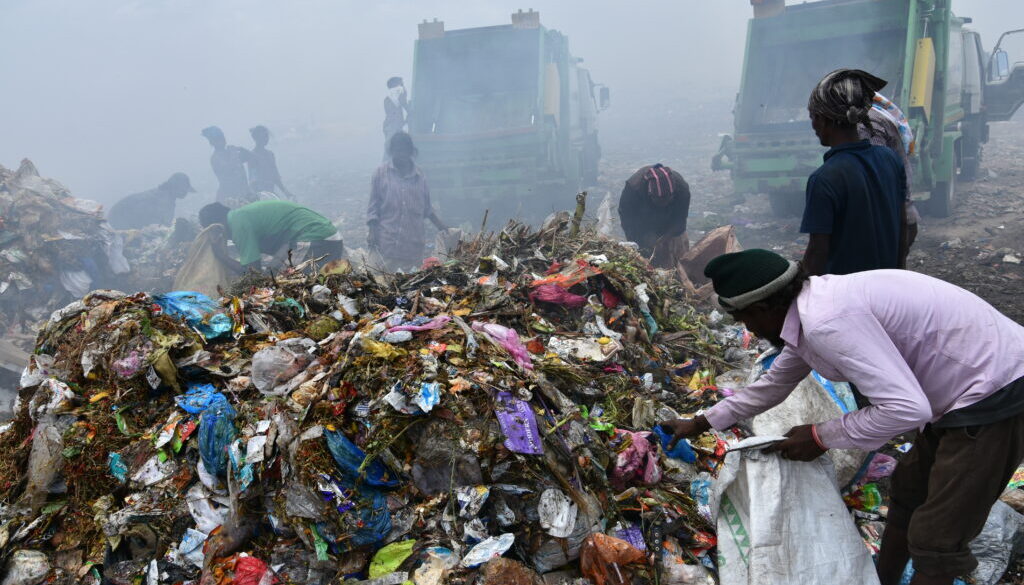Single-use soft plastics – an ever-lasting and hard problem
By JK Lakshmi
The prospect of a national ban, or at least discouragement, of single-use plastics in India is welcome. The obvious targets are disposable shopping bags, utensils (containers and cutlery), and disposable water bottles. But single-use plastics have made their insidious way into our lives in other goods where they are not so obvious. Wrappers of virtually everything ready-to-eat, not-yet-ready-to eat, and never-to-be-eaten are composed of single-use plastic. Manufacturers, distributors, vendors, and buyers of most retail products have a huge shift to make in their thinking and practice if they are to successfully eliminate plastic wrapping. Another arena that uses single-use plastic to signal hygiene is the restaurant/fast food industry that generates hillocks of transparent gloves and caps in food service. The ‘flex’ banners that people print and put up to announce everything from the birthdays of their idols to directions to the toilets at a conference are mostly unusable for another occasion.
The examples here are all of plastics that are best avoided, but still find a few voices to defend them in that they can, in theory, be recycled, although the majority of them are not, in practice. ‘In theory’ because even after people carefully segregate their waste at home or in offices, they often come up short against recyclers or scrap-dealers who do not accept soft plastics, as their trade is not very lucrative. As for the unsegregated waste dumped in public places, waste-pickers choose among the recyclables to collect the most lucrative categories of waste, and soft plastics clearly do not make much economic sense for them to toil over. This leaves the big bulk of soft plastics to make their adverse journey to water bodies, or animal bodies, or end up in unhealthy fires. The big question before us on this is how, when the trajectory of used plastic is not assuredly environment-sensitive, and is on the contrary, practically guaranteed to be environment-degrading, governments can let the production and circulation of soft plastics go on.
But, in addition to these products that are clearly single-use plastic for all to see are some products that incorporate single-use plastic so seamlessly into a multicomponent object that they may not be perceived as single-use plastics – a case in point is the typical commercially produced menstrual absorbent pad. This is a product that places convenience (not necessarily comfort) above all else, certainly above ecological health, and in most cases, over economic health too. Its greatest attraction is that it doesn’t need to be assembled before use, and disassembled or cleaned after use either. But the price for this convenience is paid by the environment.
Unlike in some of the pads in the past where the plastic shield could be removed after use, and the plant-based absorbent disposed of in household garbage or sewage, the pads of today are not amenable to disassembling and disposal via composting, and reuse or recycling. This means that by virtue of being part of a pad, plastic that could have been recycled, and absorbent material that could have been composted do not take those routes, but contribute together to garbage dumps, mass for open burning or incineration, and landfills, and also, often, to the detriment of wildlife through ingestion or inhalation. This is undoubtedly too steep a price to pay for the convenience of peeling off and dumping a pad after use. This holds true for diapers too, the difference being in the composition of the material contained (menstrual discharge/urine/stool), and also in the compactness of the product (diapers being bulkier than menstrual pads).
A concerted effort is called for to put an end to this dangerous practice:
- Policies need review and reformulation –- for waste segregation at source; clear and economically sound pathways for the recycling of all waste that cannot be composted; and composting of all compostable waste to annihilate garbage dumps and landfills –- to fully realise the intent of the ban on single-use plastic;
- Manufacturers of one-time use pads and diapers need to develop more environment-sensitive and user-friendly products, and guide users on post-use treatment; and
- Users need to contemplate the ramifications of their choices of product and post-use treatment processes, and resolve to follow less ecologically profligate ways.
This blog was first published on Animol Planet and is reproduced here with permission.
